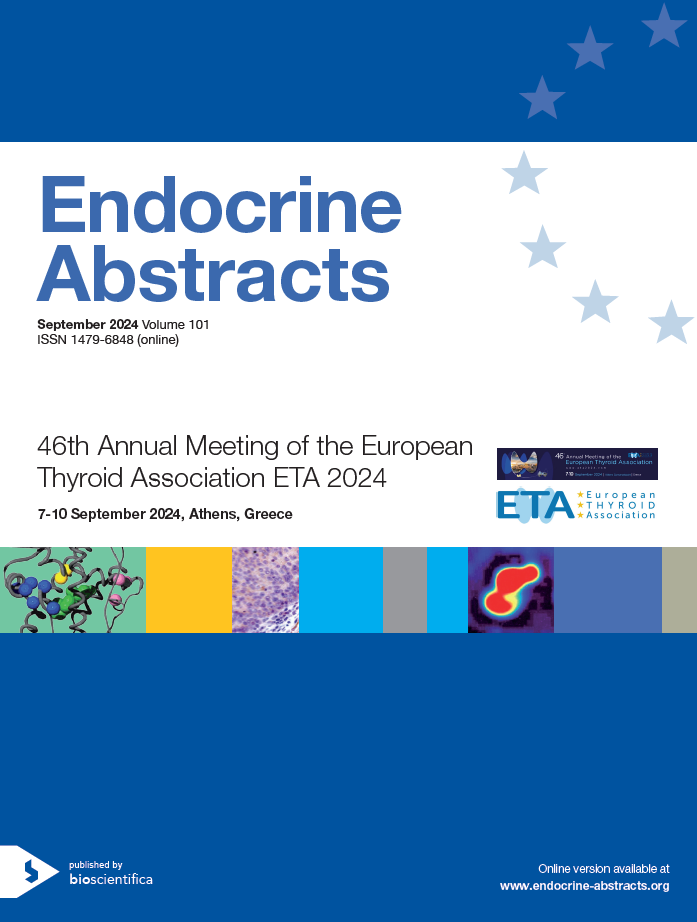
46th Annual Meeting of the European Thyroid Association (ETA) 2024
Oral Presentations
Oral Session 2: Thyroid hormone action in the brain
ea0101op-02-01 | Oral Session 2: Thyroid hormone action in the brain | ETA2024
Thyroid hormone transporters MCT8 and OATP1C1 exhibit cell-autonomous functions within the oligodendroglia cell lineage in the mouse CNS
Richter Joshua-Joel , Markova Boyka , Boelen Anita , Mayerl Steffen , Heuer Heike
ea0101op-02-02 | Oral Session 2: Thyroid hormone action in the brain | ETA2024
Gestational hypothyroxinemia in dehal1ko mice: discordant T3-dependent gene expression in brain regions and autistic-like phenotype in the offspring
Alikhani Pouya , Bertolini Andrea , Gonzalez Eva , Dominguez de Pablo Belinda , Vitelli Valentina , Them Alvarez Mario , Garcia Lopez Abraham , Fuentes-Andion Maria , Diaz Gamero Nerea , Cortes Montero Elsa , De La Fuente Fernandez Maria , Luis Trejo Jose , Saba Alessandro , Garcia Lopez Manuela , Zucchi Riccardo , Moreno Jose C.
ea0101op-02-03 | Oral Session 2: Thyroid hormone action in the brain | ETA2024
Thyroid hormone transporters MCT8 and OATP1C1 are required for proper angiogenesis in the mouse CNS
Alevyzaki Androniki , Markova Boyka , Boelen Anita , Mayerl Steffen , Heuer Heike
ea0101op-02-04 | Oral Session 2: Thyroid hormone action in the brain | ETA2024
Exploring the role of TRβ in the process of cortical neuron differentiation
Rurale Giuditta , Ghiandai Viola , Bossolasco Patrizia , Campi Irene , Benzoni Patrizia , Silani Vincenzo , Persani Luca
ea0101op-02-05 | Oral Session 2: Thyroid hormone action in the brain | ETA2024
A Novel MCT8 point-mutant mouse model shows effectiveness of phenylbutyrate treatment
Braun Doreen , Sonntag Niklas , Gueth-Steffen Mandy , Dall Esther , Schweizer Ulrich



